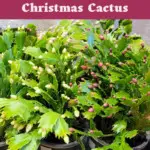
Christmas cactuses seem to be one of those houseplants everyone has hanging around their home. They’re easy to care for and last forever.
Maybe your grandmother gave you a cutting when you moved into your first apartment. Or you received one at the office Christmas party years ago, and it lasted longer than the job did.
If you want into this little club, or you’re shopping for the houseplant lover on your list, now is the time to buy.
Christmas cactuses are everywhere.
But before you grab the first plant you walk by, learn what to look for when choosing a plant so that it will last for decades.
Christmas cactuses are a part of the Schlumbergera family. These long-lived succulents are epiphytes that grow in the oddest places in their natural habitat.
They cling to rock faces, grow in the crooks of tree branches or wherever they can find a little collected dirt and organic debris. And in the winter, after a period of dormancy, they let loose with gorgeous tropical-colored blooms. It’s no wonder they’ve been popular houseplants for decades.
Beat that, Monstera, with your boring, unfurling leaves.
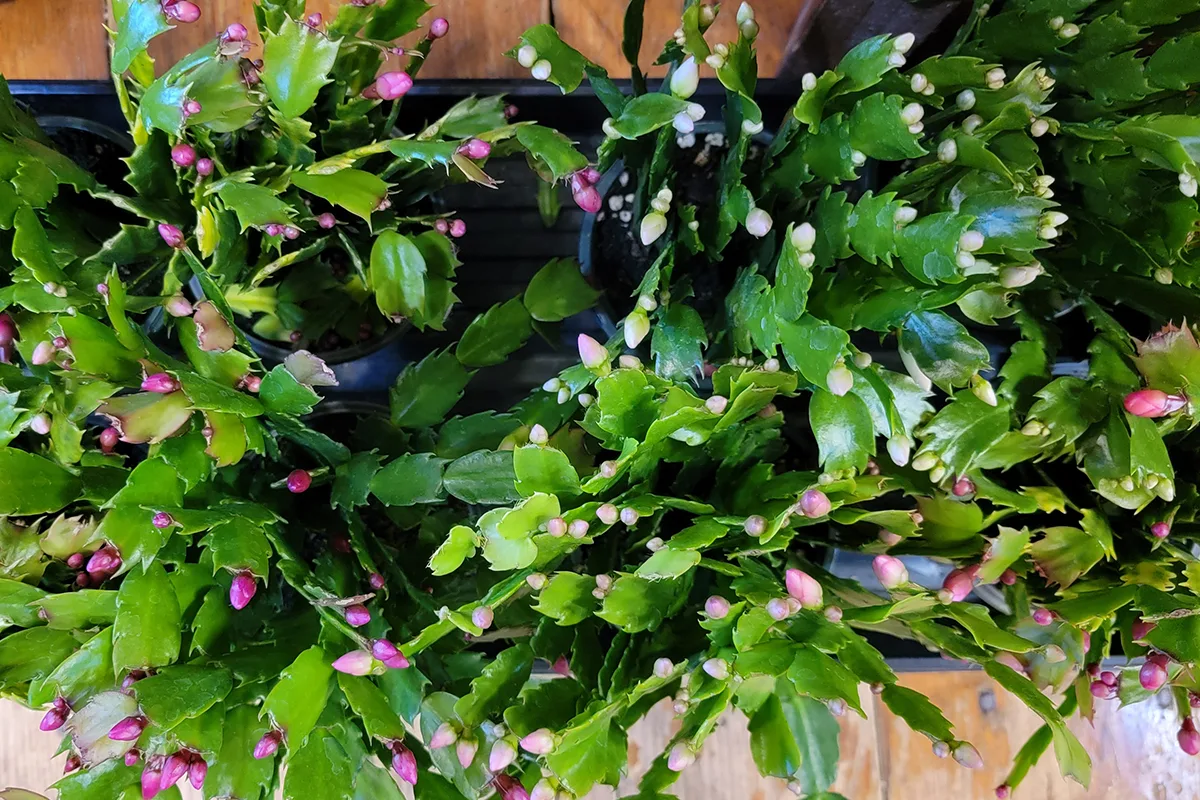
It’s no wonder, then, that every year stores are filled with spiky green plants tipped with tiny buds, just waiting to bloom during the holidays. They make the perfect last-minute gift or table topper during this festive season.
Let’s get one thing straight, though, all those ‘Christmas cactuses’ hitting the stores right now aren’t actually Christmas cactuses.
I know—big retail pulling a fast one on us, shocking.
The plants you’ll find in every big box store and local supermarket are still part of the schlumbergera family but aren’t true Christmas cactuses. What you’re seeing is affectionately known as Thanksgiving cactus because they bloom closer to Thanksgiving. They are, in fact, schlumbergera truncata, whereas the true Christmas cactus is the schlumbergera buckleyi. It’s very rare to find buckleyi in stores.
Perhaps this is why so many of us with the real deal got ours from a cutting.
Anymore, it’s quite common to see all schlumbergera labeled ‘Holiday Cactus,’ you know, to make things even more confusing. Don’t let this dissuade you from picking one up, though.
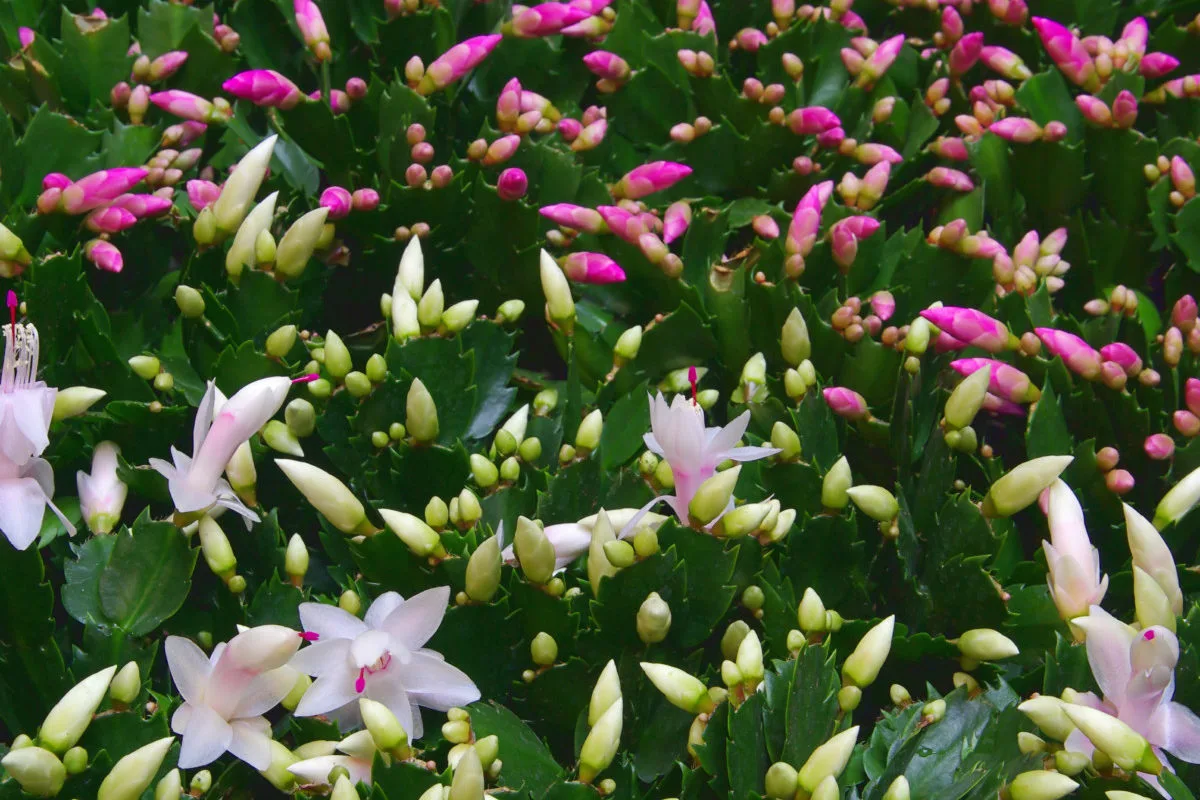
Any schlumbergera is a welcome addition to your houseplant collection, and the truncata blooms in many different colors. The way their segments grow, the plant looks like a green waterfall when it’s not blooming. And when the holidays roll around, their blooms are truly spectacular, whether at Thanksgiving, Christmas or somewhere in between.
For the sake of continuity, I’ll use holiday cactus to refer to the schlumbergera available in stores this time of year. If you’ve got your heart set on a true Christmas cactus, don’t despair. At the end of this article, I’ll show you how to tell them apart and point you in the right direction to find one.
How to Choose a Healthy Holiday Cactus
If you’ve read my article about how stores ruin poinsettias, you know the average retail store is notorious for mishandling plants. They’re especially bad this time of year. But with a little poking and prodding and judicious selection, you can find a schlumbergera that will last longer than you!
1. Christmas Cactus at the Door
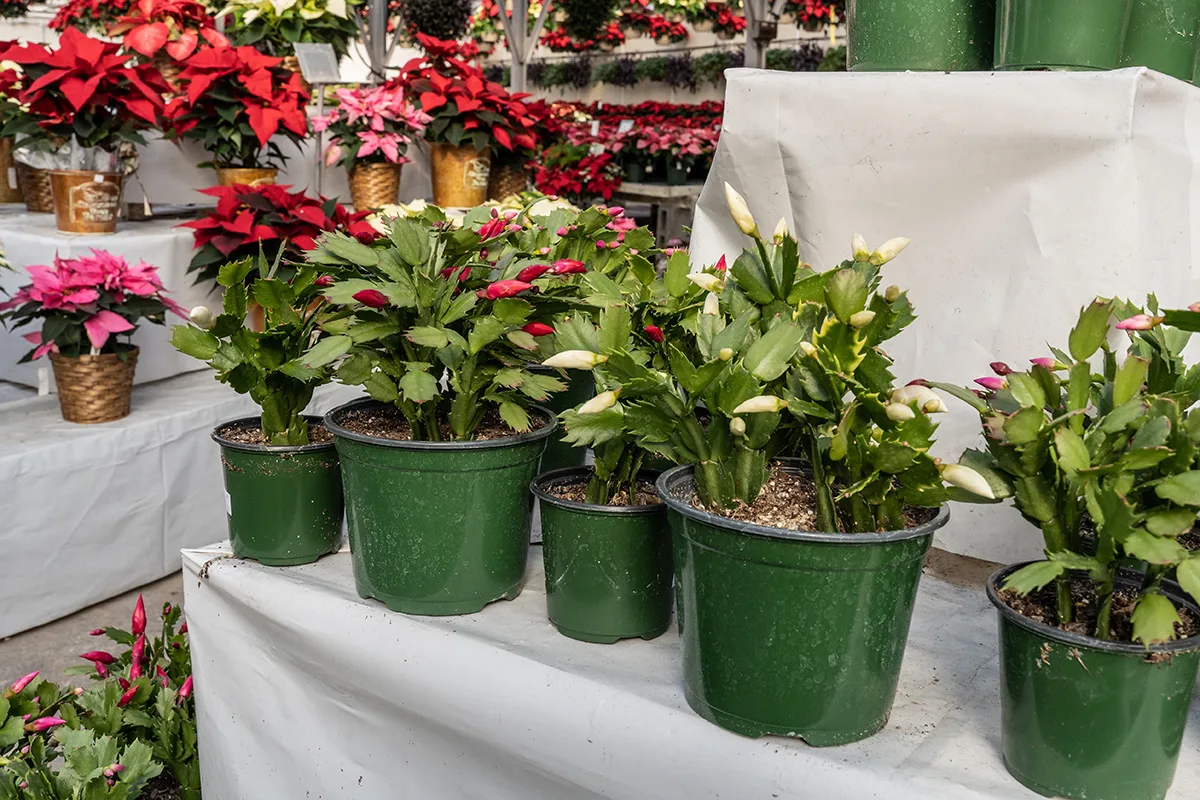
If you find holiday cactus sitting just inside the drafty door of a store, don’t be tempted; keep on walking.
Schlumbergera is a tropical plant that doesn’t do well with chilly temperatures. If exposed to drafts and cold air, they will drop all their buds for the year. They may even have entire segments fall off.
While you can still buy one of these plants, it’s unlikely the buds on it will survive long enough to bloom.
Additionally, although rarer, avoid purchasing holiday cacti exposed to extremely warm temperatures. One year I visited a fancy garden center and saw an entire tray set up right in front of a gas fireplace. I remembered thinking, “Well, those are toast.”
2. Check the Segments & Crown
Holiday cactuses don’t have normal ‘leaves.’ Instead, they have segments called cladodes. An easy way to see if the plant is in good shape is to get a little handsy.
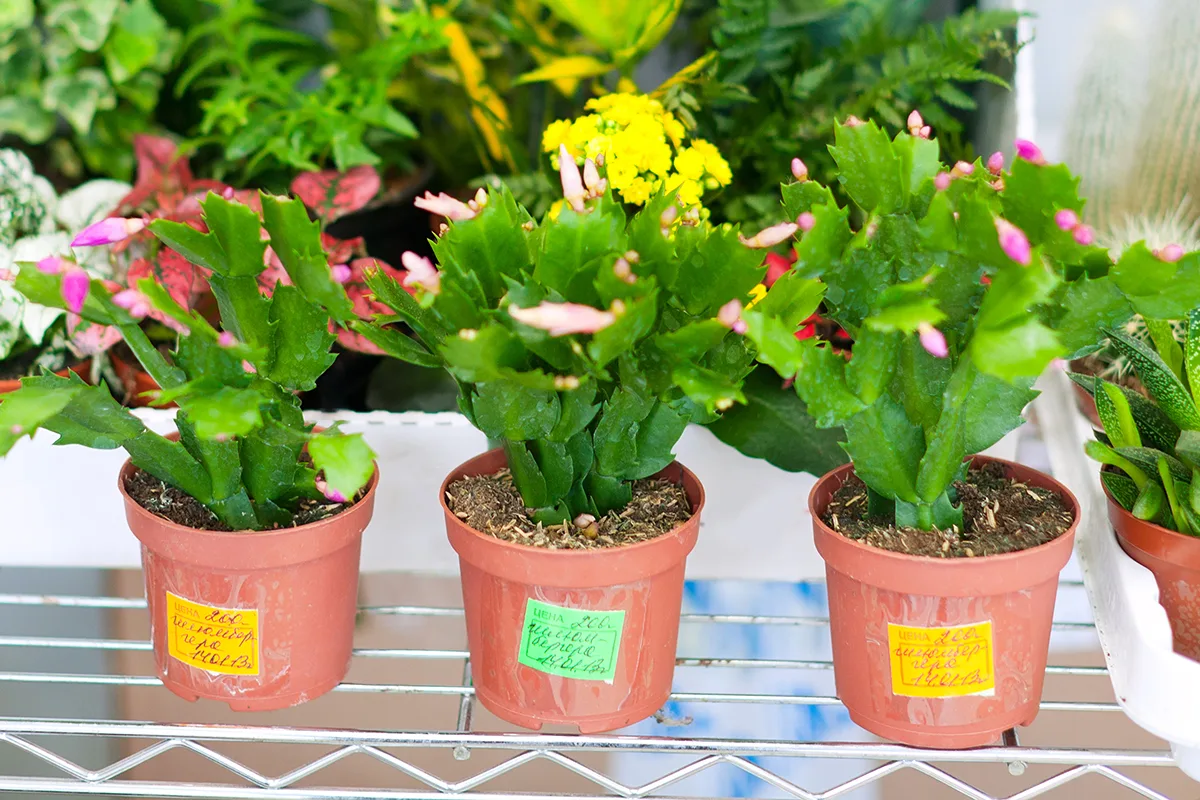
Pick up the plant you’ve been eyeballing and gently squeeze one of the cladodes; the segment should feel firm and thick. If it feels thin, papery, or appears wrinkled, you’ll want to skip this one. It’s been underwatered or may have root rot and will most likely drop its blooms.
Also, look at the crown, where the segments grow out of the soil. Check for yellowing at the base or segments rotting at the crown. This is a sure sign the plant has been overwatered. Again, you may want to skip any plants like that. The crown should be firmly rooted and deep emerald green.
3. Look at the Soil
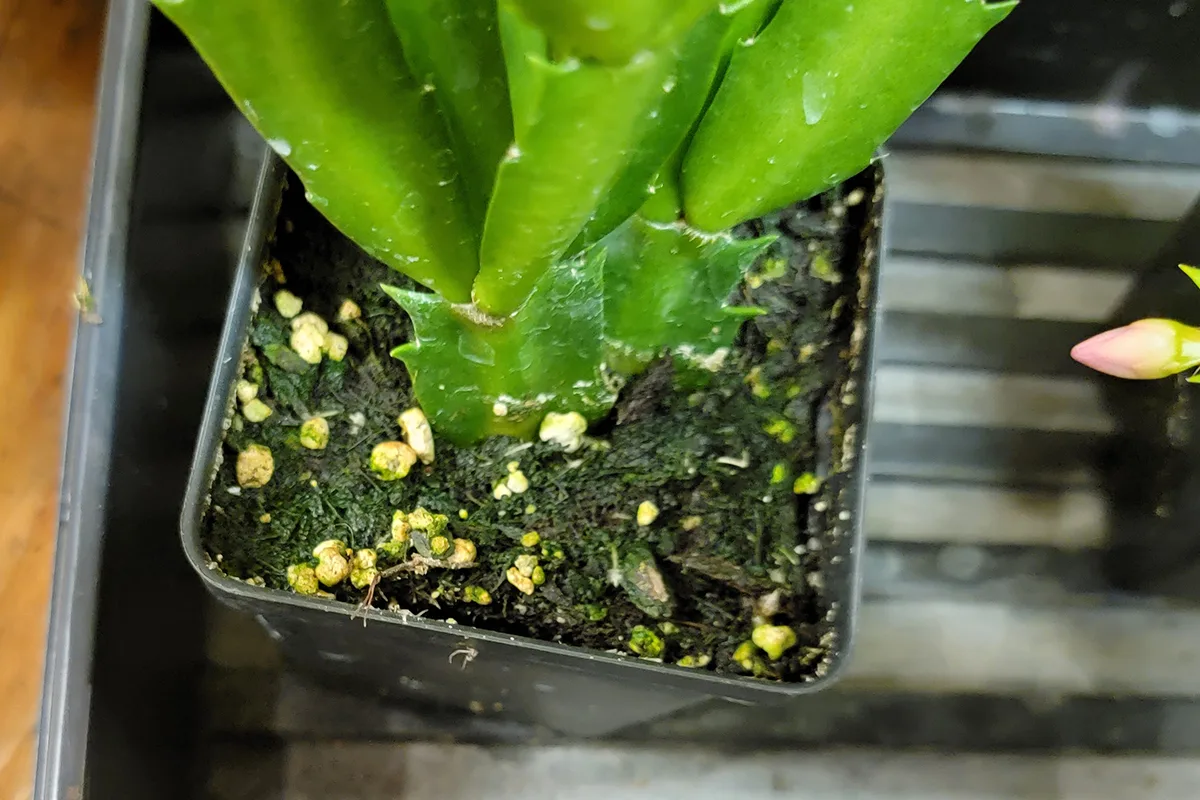
I’ve lost track of the number of waterlogged schlumbergeras I’ve found in the store over the years. Apparently, retail workers assume that all plants need water, lots of it, and more on the next shift. This spells disaster for schlumbergera, which is prone to root and crown rot.
In the wild, these epiphytes grow in loose, quickly draining organic material. You could hardly call it soil when they’re clinging to the side of a boulder. They hate having wet “feet.” Yet, nurseries pack them into standard potting soil and ship them off to a Walmart near you once they’re covered in buds.
Considering that all nursery pots have drainage holes, it’s quite impressive when stores manage to drown holiday cacti. Yet, they do all the time.
Skip soil that’s waterlogged or has mold or fungus growing on the surface. If the selection isn’t great, opt for underwatered over an overwatered plant. The underwatered plant is more likely to bounce back.
4. Pull the Plant Out of the Nursery Pot
Finally, if you can, gently squeeze the sides of the nursery pot to loosen the plant. Slowly ease the plant out of the pot and look at the roots. They should be white to slightly cream-colored. Brown roots indicate root rot, and it’s best to pick a different plant.
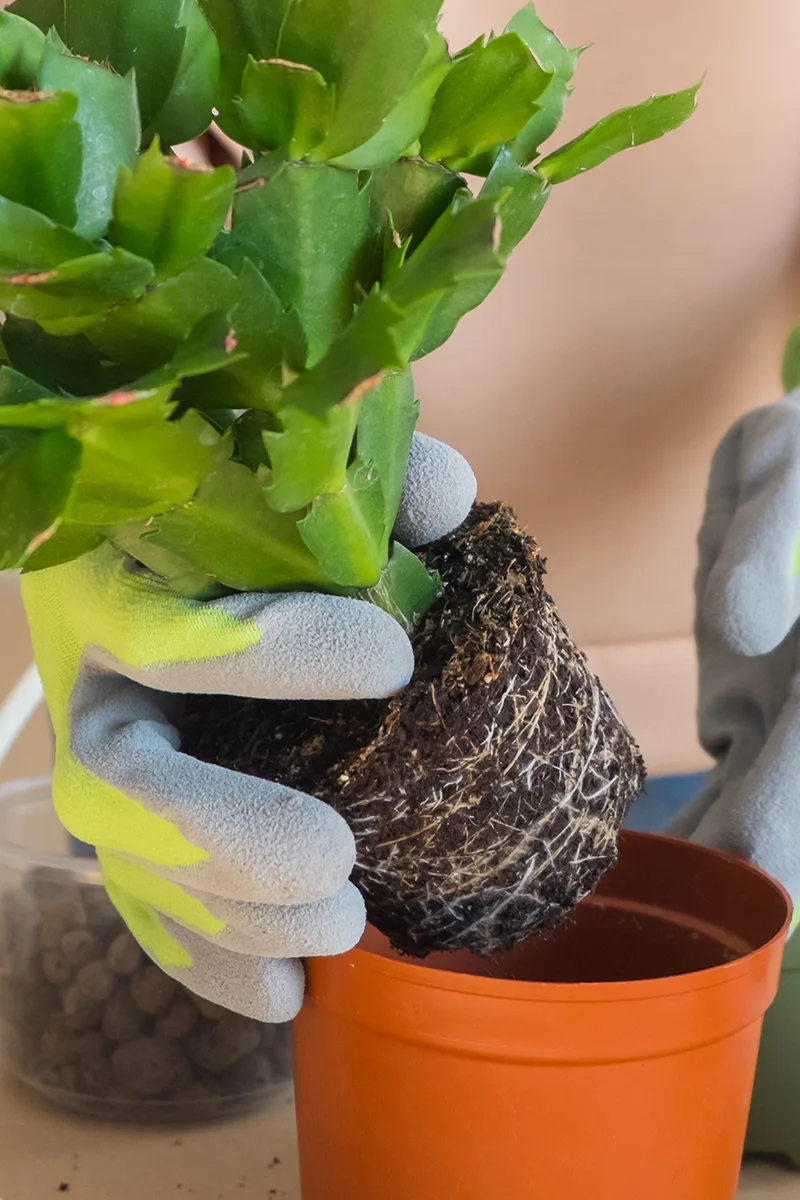
The roots and soil should smell pleasantly earthy, not dank or moldy.
5. Protect Your Purchase for the Ride Home
Once you’ve selected the perfect holiday cactus, double bag it and close the top to protect it from cold air. Don’t leave these tender plants in a cold car for long. Bring it inside with you if you aren’t going home right away and have other stops. Or better yet, make getting your holiday cactus the last stop on the way home.
Make Do With What You’ve Got
Sometimes you have to make do with what’s available. Holiday cacti are pretty resilient for the most part, and even if your chosen plant drops its buds this year, you can ensure it has plenty of blooms the next year by following my in-depth Christmas Cactus Care Guide.
How to Tell the Difference Between a Thanksgiving and Christmas Cactus
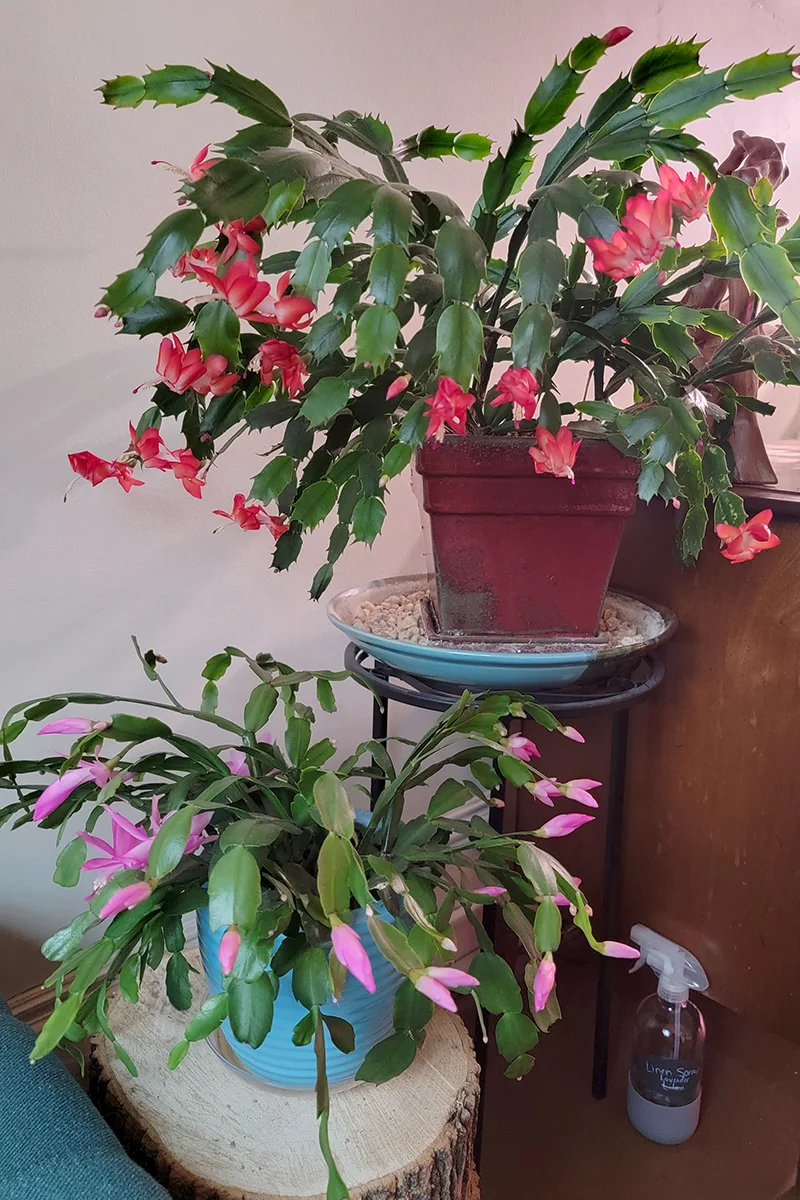
At first glance, it’s easy to think they all look the same, but look closer, and you’ll see the difference.
Thanksgiving Cactus – Schlumbergera truncata
The cladodes of the schlumbergera truncata are toothed; they have a serrated look.
Christmas Cactus – Schlumbergera buckleyi
However, the Christmas cactus cladodes have rounded nodules instead of toothed ones.
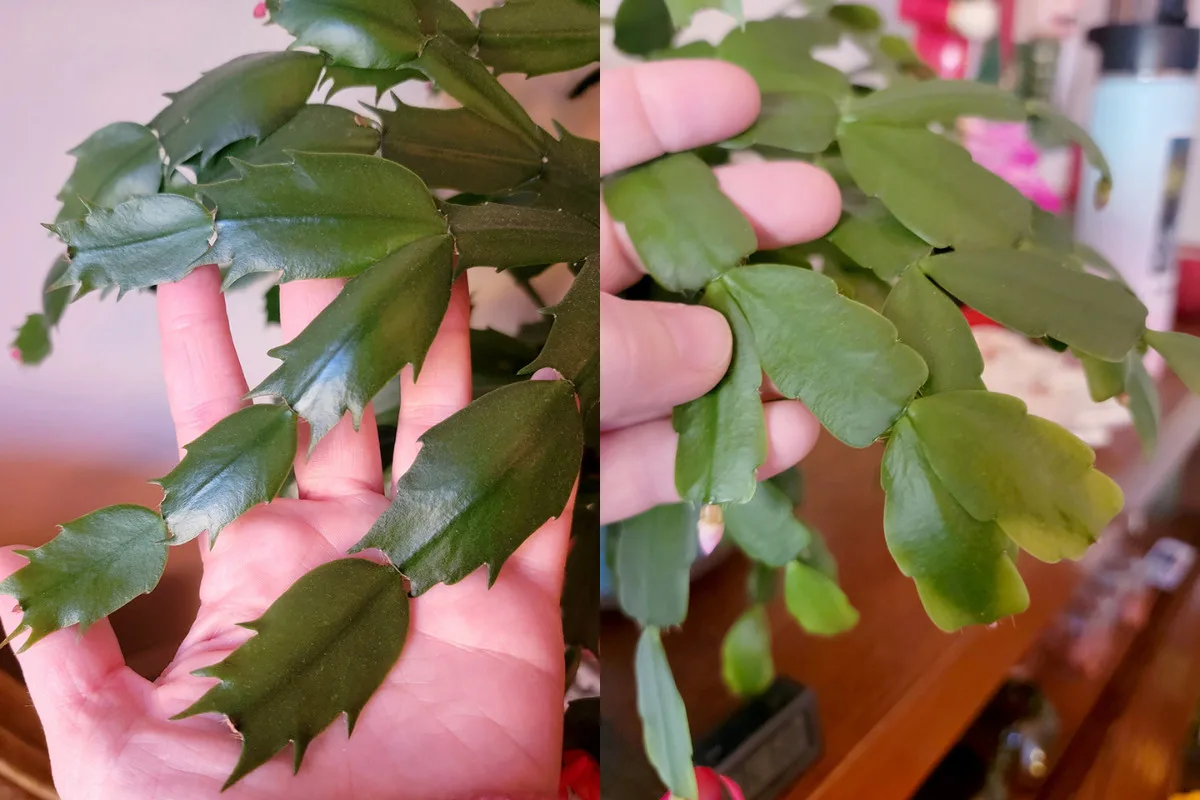
(If you stumble across one with oval segments that are indented rather than toothed or rounded, you’ve stumbled across the even-harder-to-find-Easter-cactus.)
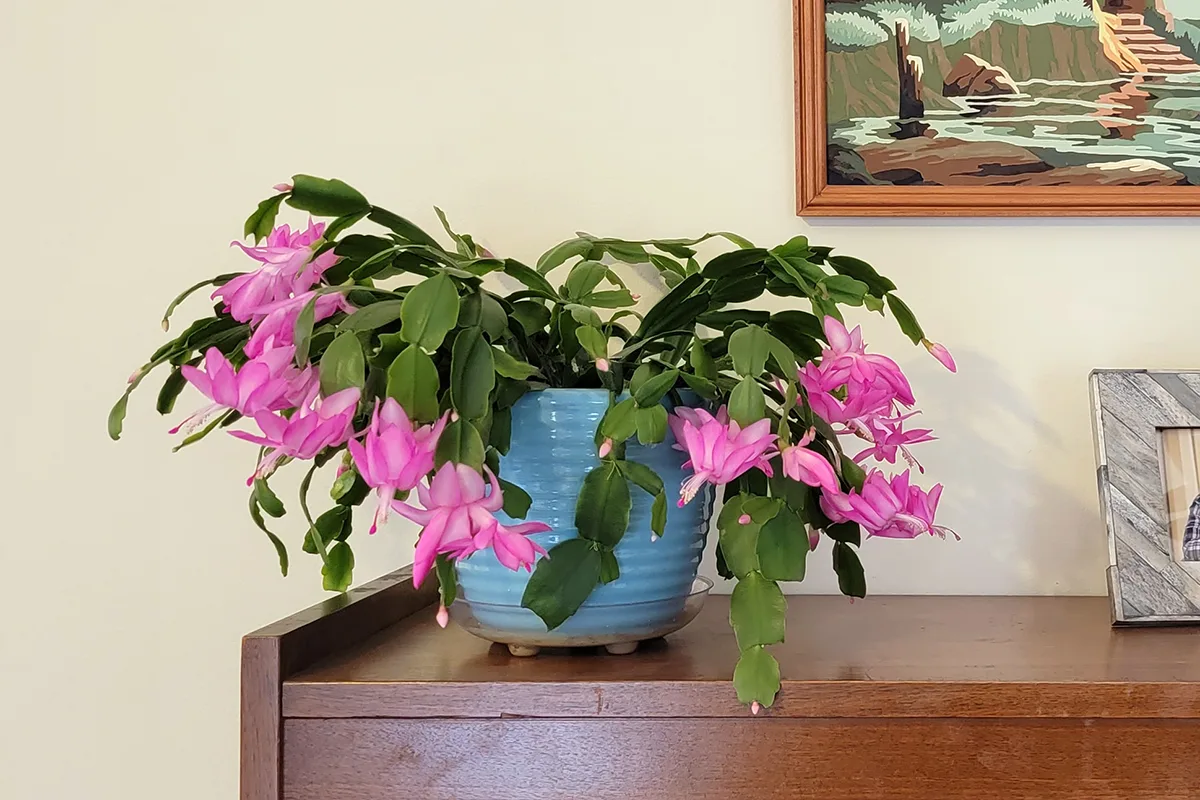
Now, for those of you where only a true Christmas cactus will do, the easiest way to get one is to ask for a cutting from a friend or family member. Heck, if you see one in a business, don’t be afraid to ask for a segment or two. Sure, you might get a few funny looks (I did), but at least you’ll have an icebreaker every time you go to the dentist.
“Hi, Tracey! How’s that plant doing you got at last year’s cleaning?”
If you have difficulty sourcing cuttings locally, your best bet is either Etsy or eBay. With a quick search for “Schlumbergera buckleyi cutting,” you’ll have plenty of options. I always sort them by distance when ordering cuttings through the mail to ensure the cuttings spend as little time as possible in the USPS.
And be sure that what you’re getting is actually a Christmas cactus, not a Thanksgiving cactus. Check those segments!

Get the famous Rural Sprout newsletter delivered to your inbox.
Including Sunday musings from our editor, Tracey, as well as “What’s Up Wednesday” our roundup of what’s in season and new article updates and alerts.


